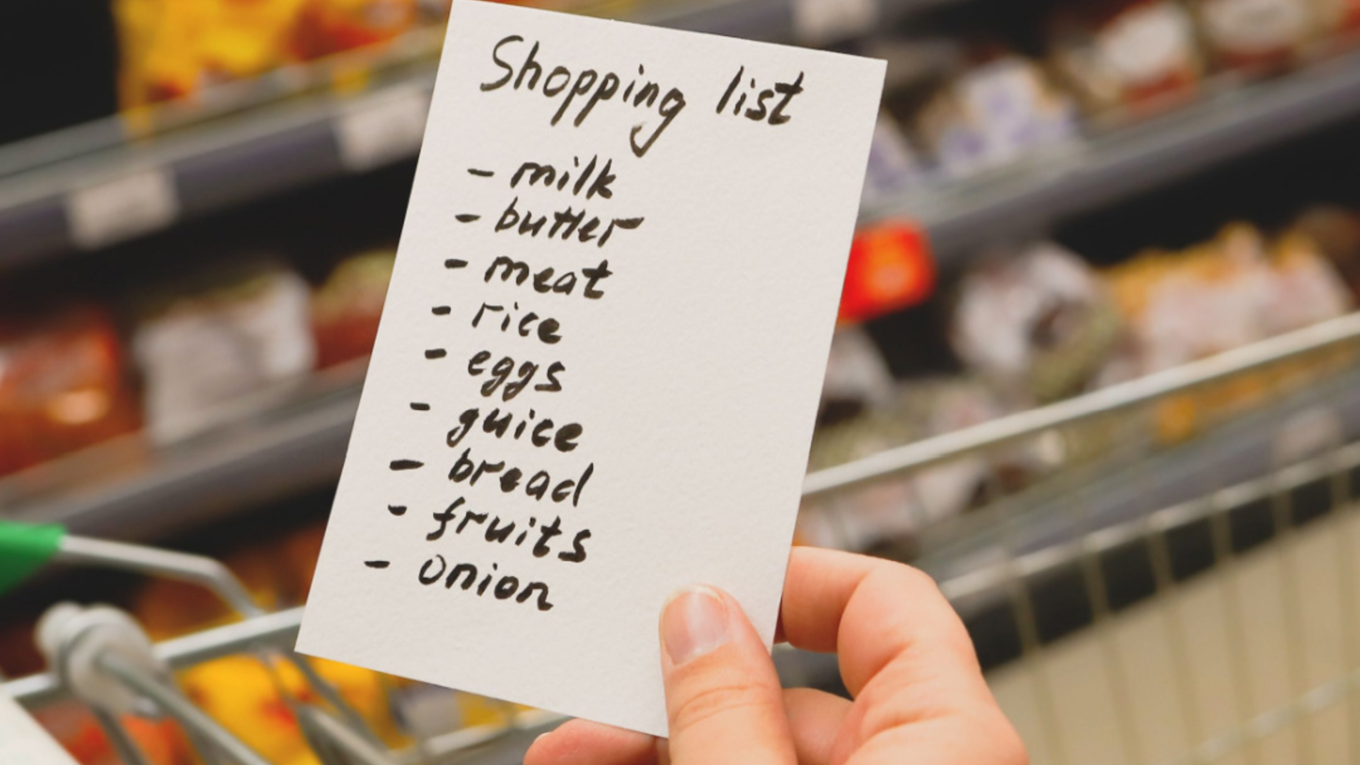How to make food shopping easier

When it comes to the food shop, it’s easy to find yourself back at home, bags full of groceries but with nothing you really needed. Instead of doing loads of unplanned mini food shops, we’re going to break down how to master ‘The Big Shop’ and get what you need with minimal effort and cost.
The prep
Fail to prepare, prepare to fail
Before heading to do the food shop, set aside time to put together a meal plan. See what food you already have, check the use-by dates to see what you need to use up first, and plan your meals around this. Think also about how many meals you need to prepare for the week and choose recipes that use the same key ingredients to get the most out of what you buy.
Get out your notes app
Putting together a meal plan will help you decide on your grocery list. There are some shopping list essentials nutritionists recommend you always have in stock to help you pull together quick, easy and healthy meals:
- Fridge: Low fat cheese, low fat yoghurt, hummus, eggs, and fruit and vegetables are always good to have.
- Freeze: If you have space, buy meat and fish in bulk to freeze for later – less expensive and reduces chance of food waste.
- Store: Tinned vegetables, tomatoes, fruit, beans, peas and fish, porridge oats, wholewheat pasta, rice and grains are cheap and help avoid food waste as they last longer.
Check your mood
Are you hungry, stressed, tired? Your mood will affect what you’re putting in the trolley, and can especially influence us to reach for the treats or comfort foods if we’re feeling low. Have a small snack and do a mood check before heading to the shop.
The shop
Know your habits
Be mindful of your shopping habits and impulses. Stick to your list and avoid aisles that will tempt you. Also check products before adding them to the trolley for any damaged or dented packaging or bruised fruit and veg.
Read the label
Before adding items from your list to the trolley, check the nutrition information to see if it’s low in salt, fat and sugar. You can compare similar products to see which is the healthiest.
This label, found at the back or side of the pack, is usually displayed per 100g and per recommended serving – use the per 100g information to compare products.
Sometimes these labels will be colour coded according to their fat, sugar and salt content:
- Green: Low
- Amber: Medium
- Red: High
But if a product isn’t colour coded, use our label decoder to guide you in your shopping:
‘Use by’ vs ‘Best before’
Keep in mind when checking dates on products, that ‘best before’ and ‘use by’ aren’t the same thing. ‘Use by’ dates are a deadline, for foods that may cause food poisoning if consumed after the set date. ‘Best before’, however, is a guideline for how long the food should stay fresh for if stored correctly – but it doesn’t mean the food isn’t safe to eat after that date, just that the quality may not be quite the same.
Out of your trolley
Before heading to checkout, do one last check of your trolley against your shopping list. Watch out for any treats or unplanned items that may have found their way into your trolley before you go to the till!
The debrief
Sharing is caring
If you are house sharing, think about what you can buy together to avoid wasting food and money. Items such as milk, butter, tea and coffee could be bought communally for sharing. Similarly, if you have bought items in bulk such as meat and fish you could freeze some for later or share with your housemates to avoid food waste.
Keep things fresh
Here are some storage tips to make your fruit and vegetables last longer.
- Onions and potatoes: keep them cool or at room temperature, away from moisture, heat and sunlight.
- Mushrooms: best kept in a paper bag in the fridge.
- Tomatoes: last longer in the fridge, but chilling changes its flavour and texture.
- Bananas: keep at room temperature but away from other fruit, as they can speed up aging of nearby fruit.
- The crisper drawer is a great option for most fruit and veg.
When food goes bad
When certain foods are nearing their end, it doesn’t mean they need to go in the bin. Here are a few ways you can get the most out of what you have.
- Brown bananas can be used for banana bread
- Use wrinkly tomatoes for a pasta sauce
- Wilting vegetables can be made into a soup
- Leftover fruit can be blended for a smoothie
Read more about your food shop and heathy eating

